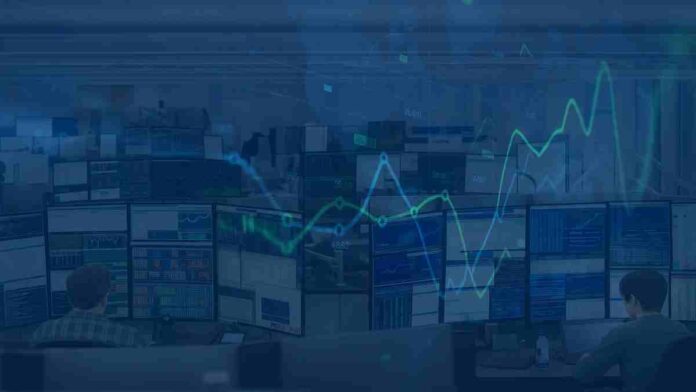Is artificial intelligence (AI) a game-changer or a speculative bubble ready to burst? As of October 2025, the AI sector’s explosive growth—driven by massive investments and circular financing tactics—mirrors the dot-com frenzy of the late 1990s. Skyrocketing valuations of private AI companies, fueled by venture capital and interconnected funding loops, raise questions about sustainability. Are we repeating the mistakes of the past, or is AI’s potential strong enough to avoid a crash? This article explores the eerie similarities between the AI and dot-com bubbles and how circular financing is inflating valuations.
AI Boom Meets Dot-Com Déjà Vu
The dot-com bubble saw internet stocks like Pets.com hit billion-dollar valuations with minimal revenue—Pets.com had just $600,000 in sales before collapsing in 2000. Today’s AI craze echoes this, with startups commanding huge valuations despite shaky profitability. OpenAI, for example, reports $10 billion in annual recurring revenue but remains unprofitable, much like dot-com darlings.
Market concentration is another parallel. The S&P 500’s top 10 stocks, led by AI giants like Nvidia and Microsoft, trade at higher forward earnings multiples than during the dot-com peak. Just as Cisco and Intel dominated the 1990s, today’s “Magnificent Seven” tech titans rule the markets. Infrastructure overinvestment also recalls the past: Billions are pouring into AI data centers, reminiscent of the fiber-optic glut that tanked telecoms post-dot-com. An MIT study notes that 95% of AI pilot projects fail to deliver, despite $40 billion in generative AI investments—a sign of hype outpacing results.
The deal-making frenzy seals the comparison. AI startups have raised $131.5 billion in venture capital in 2025, over half of global VC funding, up 52% from last year. This mirrors the dot-com IPO craze, with ten AI firms alone adding nearly $1 trillion in market value—a bubble potentially 17 times larger than the dot-com bust. The IMF suggests an AI bust could hurt, though perhaps not as globally devastating as 2000.
Yet, AI has strengths the dot-com era lacked: Backing from profitable tech giants and integration into enterprise systems suggest real utility. Still, fear-of-missing-out (FOMO) fuels investments, echoing past bubbles like tulip mania or the dot-com crash.
Circular Financing: Inflating AI Valuations
What’s driving these sky-high valuations? Circular financing, where companies invest in each other to create an illusion of growth, plays a big role. Nvidia’s $100 billion commitment to OpenAI is a prime example: Nvidia funds OpenAI’s data centers, which buy Nvidia’s GPUs. OpenAI has deals with AMD (deploying 6 gigawatts of AMD GPUs and securing options for 160 million AMD shares) and Oracle (a $300 billion cloud deal, with Oracle buying Nvidia chips). These loops create a self-reinforcing cycle of investment and demand.
In 2024, Nvidia invested about $1 billion in AI startups through direct funding and its NVentures arm, a sharp rise from prior years. xAI’s recent round, with $7.5 billion in equity and $12.5 billion in debt via a special purpose vehicle buying Nvidia processors, exemplifies this trend. Such deals have propelled 498 AI firms to unicorn status (valuations over $1 billion), with over 1,300 valued above $100 million. OpenAI’s $6.6 billion raise at a $157 billion valuation in October 2025, despite losses, underscores the mania.
This echoes Intel’s 1990s strategy of funding PC startups to boost chip demand. But the fragility is clear: If one player—say, OpenAI—falters on monetization, the ripple effects could crash valuations across the chain.
Can AI Avoid a Dot-Com-Style Bust?
The risks are real. A funding slowdown—due to missed revenue targets, regulatory scrutiny, or economic shifts—could pop the AI bubble, impacting startups and broader markets. Private firms reliant on circular financing face down rounds or failures, much like dot-com casualties. Yet, history offers hope: The dot-com crash birthed Amazon and the modern internet. AI could follow a similar path.
Hedge fund titan Paul Tudor Jones calls this “Bubble 2.0,” urging caution. As valuations soar, investors must balance AI’s transformative potential against the speculative excesses of circular financing and bubble-like exuberance. Will AI reshape the future, or are we doomed to repeat the dot-com disaster?
Disclaimer
The content on MarketsFN.com is provided for educational and informational purposes only. It does not constitute financial advice, investment recommendations, or trading guidance. All investments involve risks, and past performance does not guarantee future results. You are solely responsible for your investment decisions and should conduct independent research and consult a qualified financial advisor before acting. MarketsFN.com and its authors are not liable for any losses or damages arising from your use of this information.





